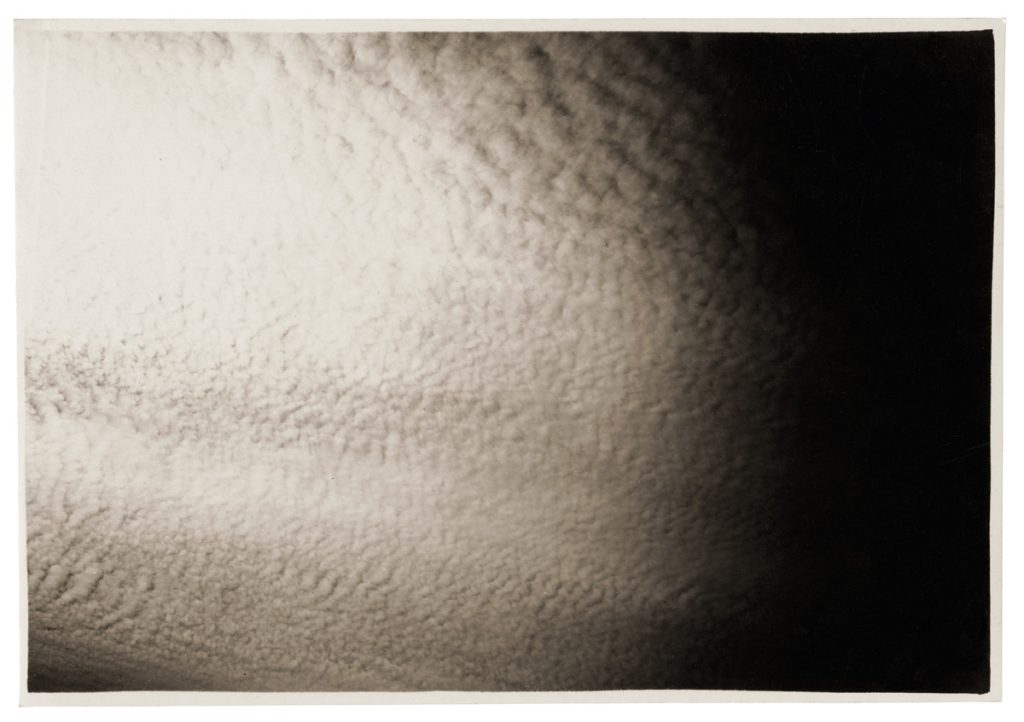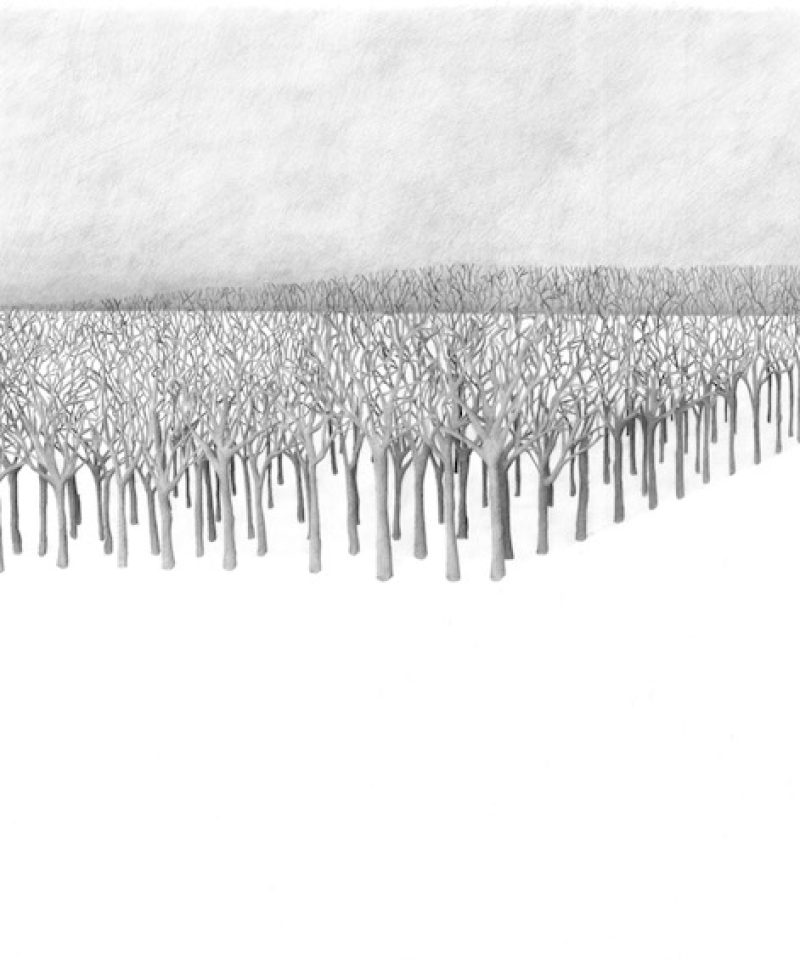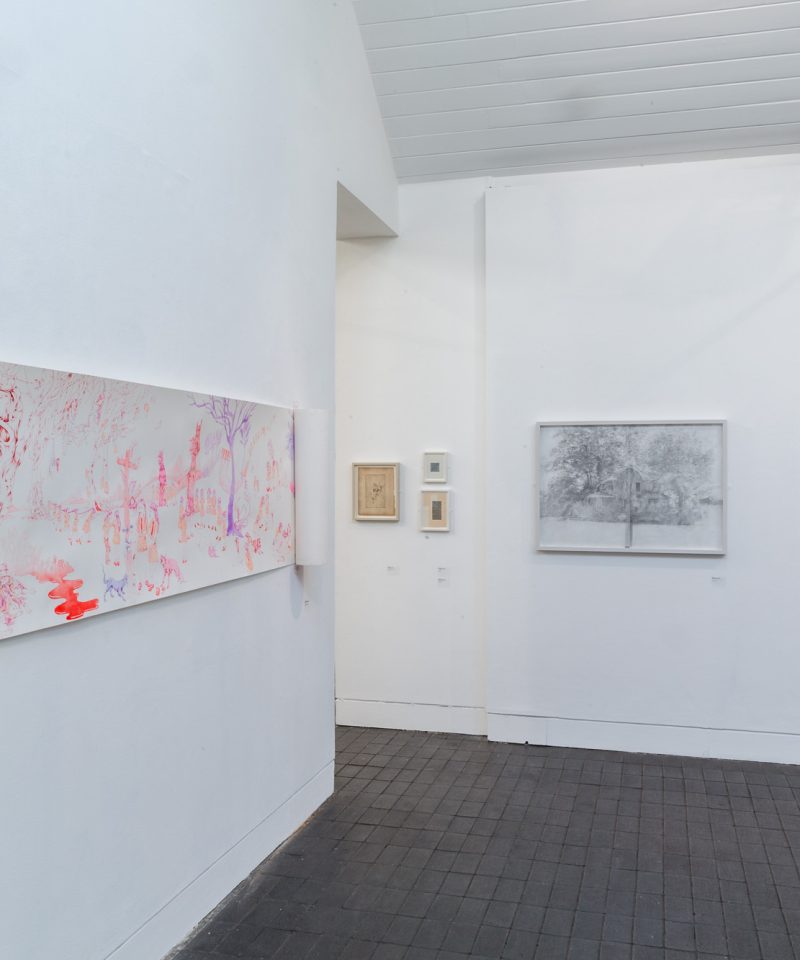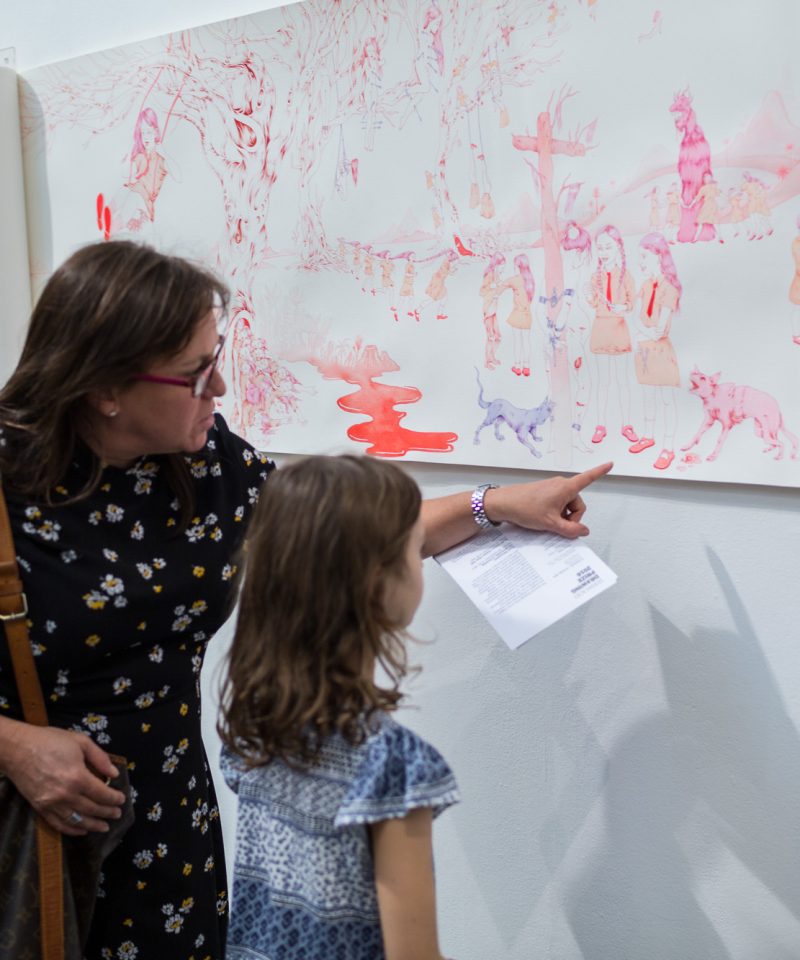A cloud is an aerosol made up of a visible mass of frozen water crystals and water vapour. A (Semi)physical indicator of the state of the atmosphere, it is fundamentally a perceptible portion of the air. Constantly fluctuating and amorphous, only distance affords a cloud visible, singular boundaries. This inherently volatile and atomic nature affords it a similarity with a multitude of elements in technological, social and political realms. Our equating of these things, such as the visual effects of nuclear warfare and the incomprehensible magnitude of internet infrastructure, with the nebulous cloud manifests as our own inability to understand them.
The Natural Cloud
On 5 September 1862, in a coal-gas balloon called ‘Mars’, meteorologist James Glaisher and his co-pilot Henry Coxwell surpassed the pre-existing altitude record of 26,000 ft. As they passed this point, Glaisher’s vision began to falter, his arms became powerless, followed by his legs, neck and back, until he became immobile and blind. Coxwell, suffering from severe numbness in his own hands, managed to pull the balloon’s rip chord with his teeth, to steer the balloon down to safer heights. By his own account, Glaisher, regained clear sight and movement after a short time, remarking to his companion: ‘I have been insensible’.
It is widely considered that Glaisher and Coxwell reached an altitude in the region of 37,000 ft. The record is not noted in Glaisher’s meticulous logbook; this incongruous gap, a result of high-altitude sickness, manifests as evidence of their achievement. The researcher’s loss of consciousness indicates that they ventured into a territory in which they became ‘insensible’. Glaisher’s absence of documentation therefore becomes their corroboration.
Historically (perhaps in contrast to a contemporary understanding) the meteorologist, like Glaisher, is torn between natural scientific discovery and adventurist exploits. On the one hand, they wanted to register their research as analytically as possible; on the other, the work demanded an insatiable desire for thrills. To uncover the secret language of weather they sought out tornados, lightning, and deadly air, placing themselves in environments without any knowledge of the bodily effects they could have. Research reports, such as Glaisher’s, are experiential, their narratives centred around themselves as a pioneer of discovery. The word ‘I’ is always present – and prevalent.
The study of weather is a complex and broad scientific study. It is also seemingly impossible. Nephology, the study of clouds, is a discipline in which the researcher cannot touch, sample, conserve or archive their subject. It is melancholic in this respect; even the sea can be bottled and kept. It is a study rooted in observation – the witnessing of something that is constantly evolving, changing, shifting and disappearing. The emergence of ‘formations’ are dependent on a barely penetrable complex of physical systems which continue to unfold within the cloud itself. The cloud has no stability, only perpetual movement and the signification of its territory.
We classify the cloud as a single entity to afford a temporal, ungraspable ‘thing’ some sense of a fixed totality. Somewhere between physical and unphysical the cloud is synonymous with our own lack of clarity, fogginess, our own inability to grapple with certain concepts or information. As the clouds respond to a system that we have no direct access to, we try to see ourselves in them, and measure our own readings as self-descriptions. Despite their independence, we project ourselves onto their formless formations.
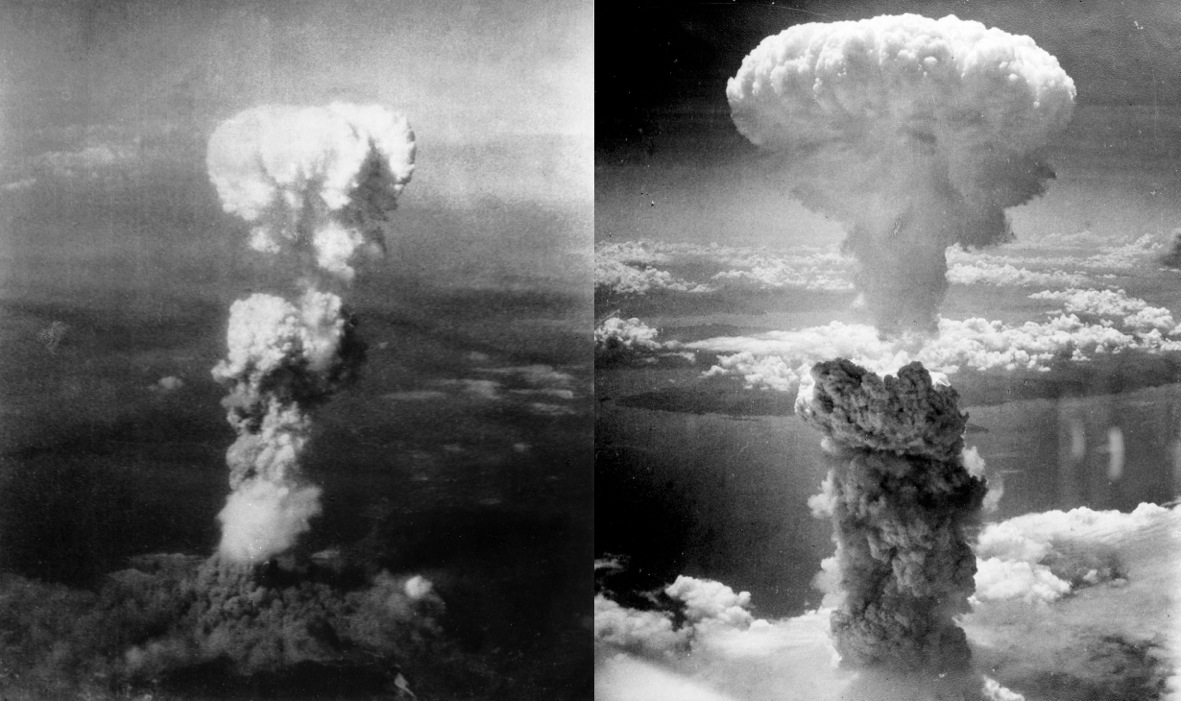
The Mushroom Cloud
The mushroom cloud is now a familiar image. The first documented detonation of an atomic bomb was on 16 July 1945, conducted by the United States army as part of the Manhattan Project – a research and development project that produced the first nuclear weapons during World War II. The explosion was captured from a multitude of viewpoints by over fifty cameras, entering a new image, and icon, into popular consciousness. When first made visible by photography, the image of the atomic bomb was both inconceivable and unrepresentable, its devastating yet insubstantial nature crystallised in the shape of a bulbous cloud.
The visual debris of the atomic bomb quickly became known as the ‘mushroom cloud’. Blooming and accumulating, its uncontrollable, physical/unphysical nature mirrored that of the cloud, its own momentum erupting into a cumulative expansion, like the stalk and accruing head of a mushroom. The image was something close to what Roland Barthes classed as ‘pure sign’ – a visual icon so unprecedented that, initially, it lies outside the webs of signification. Now, it is a familiar, deeply imprinted, icon in the myths of the postwar era.[1]
The first images of nuclear warfare were grainy and abstract. They contained no scale-makers, no reference to location, civilisation or possible targets. The absence of these attributes allowed for a reading of its monumental scale independent of potential damage. Any written descriptions surrounding the images, focused purely on the visual, evading any ethical debate. Following the 1945 atomic bombings of Hiroshima and Nagasaki, which killed at least 129,000 people, ‘Newsweek’s’ headline read: ‘the atoms of Nagasaki rise 50,000 feet high’. In multiple issues, ‘Life’ detailed the scenes: ‘a huge ball of fiery yellow’, ‘a big mushroom of smoke and dust’, ‘a tremendous, ugly waterspout’ and ‘a pillar of swirling particles.’ Today, the Wikipedia entry for nuclear weapons contains a historic photograph with the caption: ‘The mushroom cloud of the atomic bombing of the Japanese city of Nagasaki on August 9, 1945, rose some 11 miles (18 km) above the bomb’s hypocenter.’
These images and captions seek to detail a capacity of force which references only the phenomenon itself: how far it rose, how vastly it spread, how brightly it burned. While the allusive images differ, they all refer to natural elements. The focus is on the visible aftermath from afar, an accumulative destruction which expands out of itself. Anthropomorphic, it entered discourse as a new species of being that is analogous to other living things – the sun, a flower, a mushroom. The mushroom cloud bridged a previous gap between the human and the natural; it became a man-made marvel of nature.[2] This translation of the wholly manufactured into a natural event not only absolves any human action, it also parallels something unintelligible with something we have come to understand as sublime and overwhelming: the cloud.

The Digital Cloud
The internet was born out of nuclear warfare. By the 1950s the fission bombs that ravaged Nagasaki and Hiroshima had already been exceeded by thermonuclear weapons, which could yield 10,000 kilotons of destructive force (in comparison, ‘The Fat Man’ atomic bomb dropped on Nagasaki exploded with an energy of approximately 20 kilotons of TNT). The geopolitical response to this unprecedented potential for annihilation was the doctrine of mutual assured destruction. Based on the theory of deterrence, and ensuring the proliferation of nuclear weapons, this strategy is a form of equilibrium in which, once armed, neither side has an incentive to initiate a conflict, or disarm.
M.A.D. relies on the assumption that in nuclear conflict, the ‘side’ which is attacked, would retain sufficient strategic forces to retaliate. But, if communication infrastructure is knocked out by the first wave of bombs, how could the idea of mutually assured destruction be retained? In 1962, the answer came in a memo from Paul Baran, a researcher at the RAND Corporation (Research and Development). Rather than utilising a centralised network, Baran suggested the introduction of distributed networks, so that the risk of elimination is spread across multiple points, rather than one, central point open to vulnerability. In this memo, Baran also suggested the possibility of ‘a new common-user system’, which interconnects ‘many’ all-digital links.[3] This post-war network eventually evolved into what we now understand as the internet, and, ultimately cloud computing.
The cloud is a network of servers. Some of these servers provide an online service or storage – like Apple’s iCloud, or Amazon Drive, whereas others function as a data sharing platform – such as Facebook and Instagram and other social networking sites. As a piece of information flows through the cloud it is designed to get to its destination with “five-nines” reliability (commonly taken to mean 99.999%), so that if one hard drive or piece of wire fails en route, another one can take its place. It is reliable and ubiquitous; we are assailed with the effects and affects of the cloud every single day. Unseen and unnoticeable, the cloud is always there, atmospheric and part of the environment.[4]
In computing, the cloud’s genesis was as a symbol. Engineers as early as 1970 used the icon of a cloud to represent any unknown or unpredictable network. Rooted in our basic understanding of the cloud as vague and unknowable, the metaphor for post-war paranoia became the same metaphor we apply to the system of internet-based networks which now govern contemporary life. We have equated an incomprehensibly vast system of millions of hard drives, servers, routers, fibre-optic cables and networks, with the singular, abstract form of a cloud. While this demonstrates our inability to grasp its diaphanous nature, it also demonstrates our fear of it.
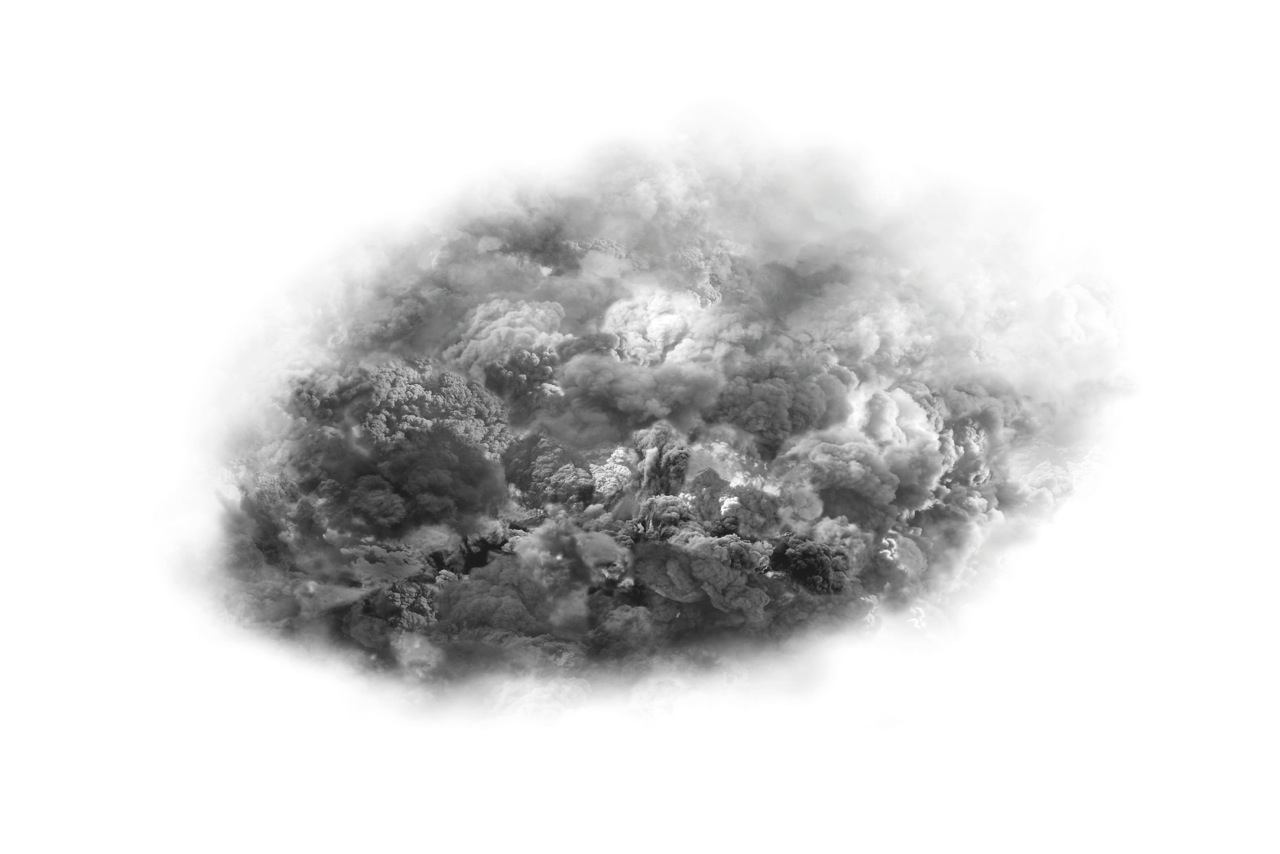
Cumulative Loss
Kate Fahey’s digital drawing ‘Cumulative Loss’ is a crystallisation of the diachronic iconography of the cloud. It collages together appropriated media images from internet searches of explosions in the Middle East since 2012. Fahey’s composite construction mirrors an archetypical cloud formation. Its density lessens towards its fabricated edges, softened as though melting into its surroundings, or emerging from them. Elements are lightened and translucent, as though brightened by sunlight, whereas others resemble thunder clouds, ominous and chalky. In this sense, Fahey’s drawing evokes the natural language of the cloud, condensing its fluctuating, unpredictable nature into one succinct image.
Despite their clear contextual significance, images of mushroom clouds and explosions have become interchangeable from one another. In popular culture, their distinct political cause and consequence has been replaced with a universal representation of the potential annihilation of human civilisation. This iconography mediates the ‘reality’ of explosive warfare as viewers understood/understand it, so that, as a metaphor for horror and destruction, it has come to exist separately from its own ‘reality.’ Fahey’s collection of different images, and different physical instances, eradicates any specificity of place, time or casualty. In knitting them together, Fahey parallels the increasingly apolitical nature of the iconic mushroom cloud: a signifier of warfare without divulging any actual information.
Because of the direct lineage between nuclear warfare and decentralised networks, the commercial naming of ‘the cloud’ manifests as a continued acknowledgment of the potential destruction it could afford, to make possible the absolute annihilation of humankind, irrespective of people, irrespective of politics. Using a search engine to locate a host of war imagery, which has been uploaded and shared, available for download and re-appropriation, re-establishes this trajectory. Fahey’s meticulous digital stitching directly connects the proliferation of war imagery and the fundamental potential of online networks with the prevailing visual icon of warfare.
All clouds grow and destroy. Their movement is constant and always seemingly above us. In its volatility, the cloud has become an over-arching symbol for elements of the unknown, for uncertainty, dark moods, networks and systems too large to comprehend, instances of sublime terror, and phenomena which in the face of human interaction, overpower and subsume us. In this sense, we do reveal ourselves in the clouds.
Bibliography:
Hales, Peter B., The Atomic Sublime, 1991, published in American Studies Journal Vol. 32, No. 1
Ribas, Joao, Under the Clouds, published in Under the Clouds: from Paranoia to the Digital Sublime, 2015, Fundação de Serralves
Hu, Tung-Hiu, A Prehistory of The Cloud, 2016, The MIT Press, Cambridge
[1] Hales, 1991, 5
[2] Hales, 1991, 5
[3] Ribas, 14
[4] Hu, IX
